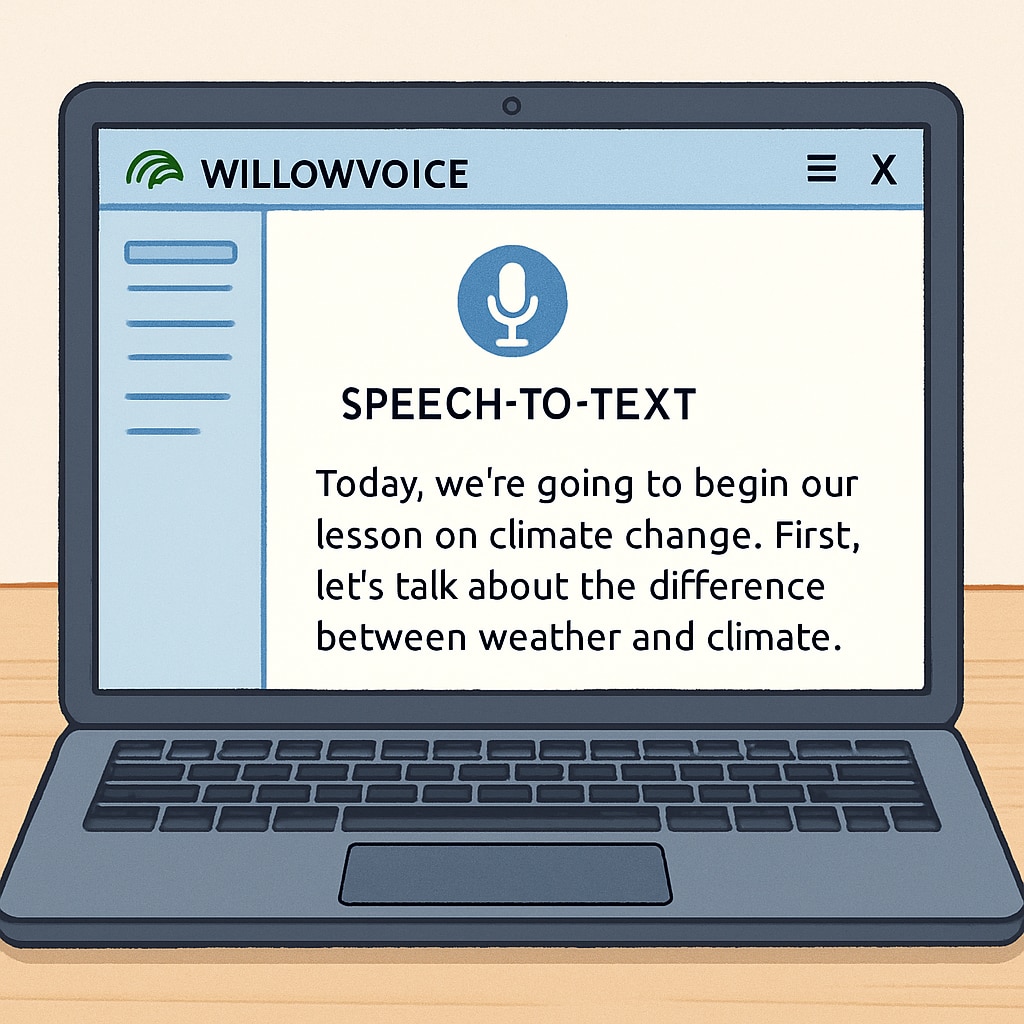Speech recognition technology is revolutionizing the way educators approach their daily responsibilities, enhancing teaching efficiency and the quality of educational feedback. Tools like WillowVoice have become indispensable for K12 teachers, allowing them to save time on administrative tasks, streamline communication, and create more space for meaningful classroom interactions. By shifting the focus from paperwork to pedagogy, these technologies are reshaping the educational landscape.
Transforming the Teaching Workflow with Speech Recognition
For K12 educators, managing lesson plans, grading, and student feedback can be time-consuming and overwhelming. WillowVoice, a speech-to-text tool designed specifically for educators, simplifies these responsibilities by converting spoken words into accurate digital text in real-time. This capability enables teachers to:
- Quickly transcribe class discussions and lectures for future reference.
- Document personalized student feedback without interrupting the teaching flow.
- Create detailed lesson plans through dictation, saving hours of manual typing.
As a result, educators can redirect their energy toward fostering student engagement and developing creative teaching strategies. According to a Wikipedia entry on speech recognition, the accuracy of modern speech recognition tools has reached an impressive level, making them reliable for high-stakes applications like education.

Enhancing Educational Feedback with Technology
Timely and constructive feedback is critical to student success, but it can be challenging for teachers to provide personalized insights for each student. Speech recognition technology bridges this gap by enabling educators to voice their thoughts and have them instantly converted into text, which can be shared directly with students or integrated into report cards. WillowVoice, for instance, offers advanced features that allow teachers to:
- Provide detailed feedback on student assignments without the need for prolonged typing sessions.
- Share audio feedback for students or parents who prefer verbal communication.
- Maintain a digital archive of feedback for tracking progress over time.
These tools not only save time but also ensure that feedback is more comprehensive and personalized, ultimately improving students’ learning outcomes. As noted in a Britannica article on speech recognition, the technology is becoming increasingly popular for its ability to enhance productivity in various fields, including education.

The Long-Term Benefits for K12 Education
In addition to immediate efficiency gains, the integration of speech recognition technology like WillowVoice offers long-term benefits for K12 education. These include:
- Reduced teacher burnout: By automating repetitive tasks, teachers can focus on their core mission of educating and inspiring students.
- Inclusive education: Tools like WillowVoice can assist teachers in providing accommodations for students with disabilities, such as creating transcripts for hearing-impaired students.
- Data-driven insights: The digital records generated by speech recognition tools can be analyzed to identify trends in teaching effectiveness and student performance over time.
As a result, educators and school administrators can make informed decisions to further enhance the learning environment.
In conclusion, speech recognition technology is more than just a convenience—it is a transformative force in education. By improving teaching efficiency and the quality of educational feedback, tools like WillowVoice empower teachers to focus on what truly matters: nurturing the potential of every student. As this technology continues to evolve, its role in K12 education will only grow, paving the way for a more dynamic and effective teaching experience.
Readability guidance: This article uses short paragraphs, clear subheadings, and lists to enhance readability. Passive voice and long sentences are minimized, and transition words such as “in addition,” “as a result,” and “therefore” ensure smooth flow.


